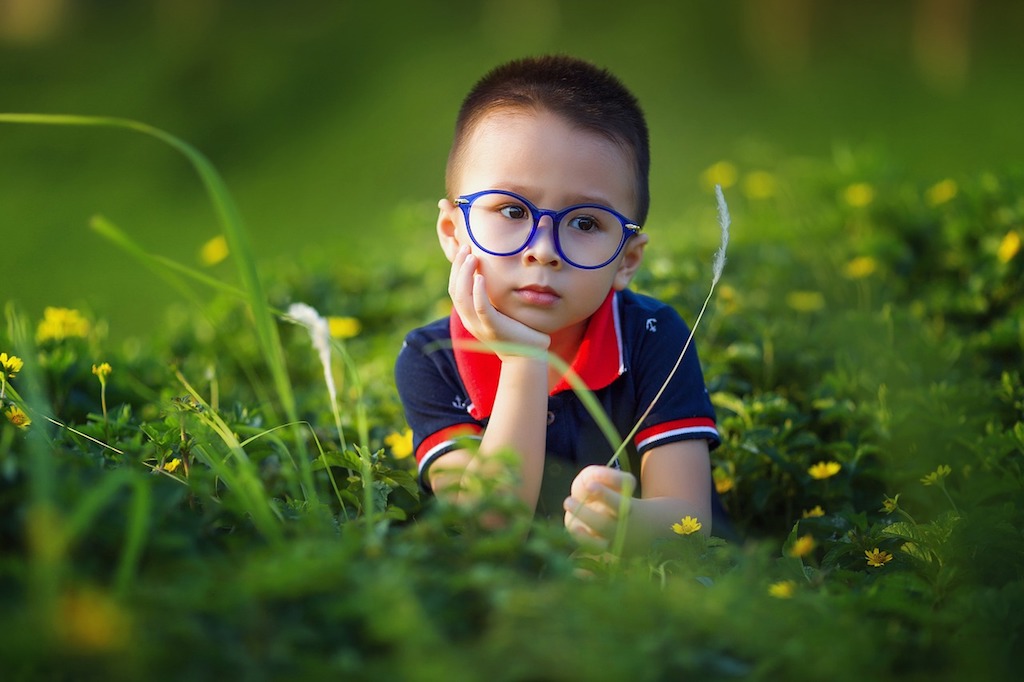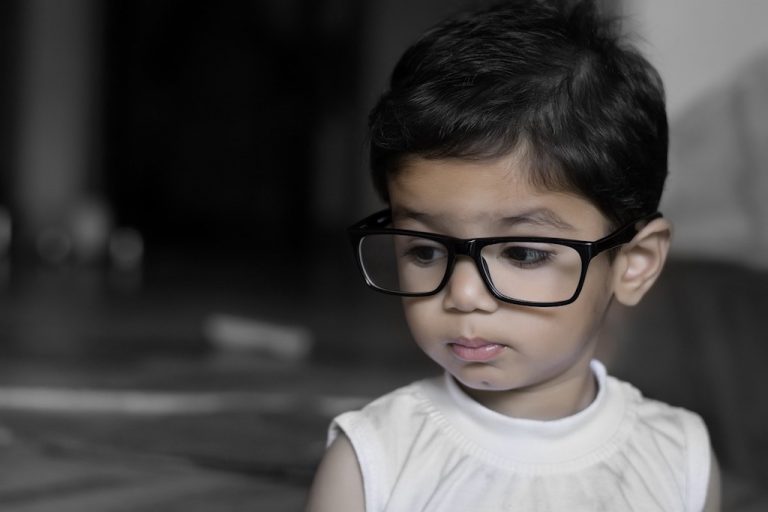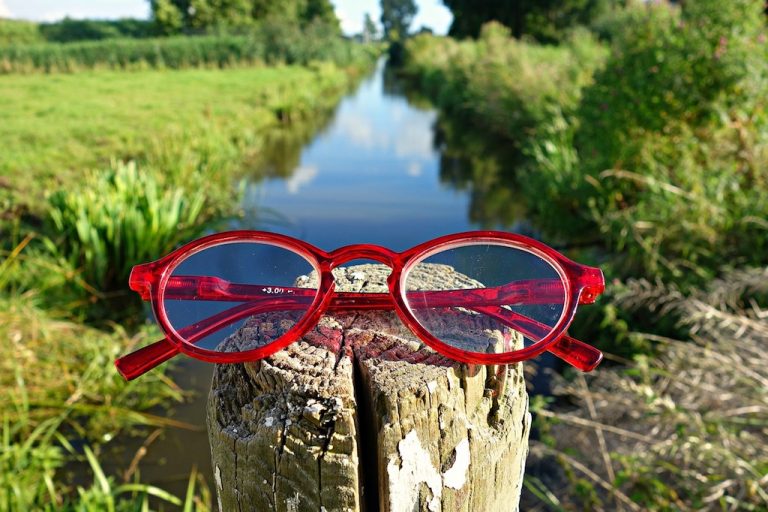SingaporeMotherhood | Preschooler & Up
September 2018
How to Choose the Right Spectacles for your Children

The right pair of spectacles which fit children comfortably can help maintain healthy eyes and good vision, which play critical roles in a child’s learning and development.
Do your children need spectacles? They’re in good company. Singapore has one of the world’s highest childhood myopia prevalence rates so if your little one comes home from school with a letter that recommends glasses for her, don’t fret. There are lots of spectacle options out there, and many places to get a pair that fits your darling perfectly. Don’t put it off too long, and invest time to find the right pair. “Healthy eyes and good vision play a critical role in a child’s learning and development, so having the correct fit is crucial in ensuring the child is comfortable in the frames and seeing well,” advises Ms Jessica Sun, Optometrist, Ophthalmology Service, KK Women’s and Children’s Hospital.
[banner][/banner]
When buying specs for your child, you need to consider several factors: fit, material, how it looks on your child, and even how fashionable it is. So yes, it’s not simply a matter of walking into a store and buying a pair off the shelf. “Whether the glasses are prescribed to be worn ‘part-time’ or ‘full-time’, children should feel motivated to wear them, so it’s especially important that they feel good and proud while wearing their glasses,” Ms Sun says. So if you’re looking for a pair of spectacles for your soon-to-be “four-eyes”, here are some things to consider:
1. Fashion
Let children be part of the frame-selection process to ensure they chose a frame in the style and colour they love. (Editor: My son wanted one like Harry Potter’s. When he outgrew these, he wanted a pair just like his BFF’s.) Aesthetics aside, how the frame sits on the face is most crucial for its function and comfort.
2. Frame Fit
The frame should not be too big or too small for the child’s face. It’s important that the frames do not touch the cheeks, and the eyelashes are not touching the back surface of the lens. A full-rimmed frame is recommended as this is sturdier than a semi-rimmed, or rimless glasses.
3. Frame Material
Choose a frame that is lightweight, robust and break-proof. There are good-quality acetate plastic and metal frames in the market now. However, some children are allergic to the nickel content in some metal alloys so opt for a frame made of pure titanium (a light, hypoallergenic metal) if your child prefers a metal frame.
4. Temples and nose bridge
The temple (long arms on the sides of the frame) of the spectacles should not be too long or short, and should curve around the ears comfortably. If it’s too tight, you child will be uncomfortable. Too loose, and the glasses may slip off your child’s face. Some frames have a specially-designed temple tips that wrap around the ears. These are known as ‘cable temples’. They ensure that the frame stays in place. You may also want to look for temples with spring hinges which allow the temples to bend outwards and which do not break.
A child’s nasal bridge is not yet defined, so there is less support for frames with unadjustable nose pads (commonly seen in plastic frames). Such frames will often sit too close to the eyes, leading to foggy lenses. In addition, they tend to slide down the face easily. Find a frame that sits well on the nose bridge and which offers even weight distribution across the face. Metal frames usually come with adjustable nose pads so they can fit every child’s nose bridge.
5. Lens material
When it comes to children’s lenses, eye safety is the main priority. Glass lenses should never be prescribed for children. They can break and shatter and is a safety hazard for the eye. Instead, consider polycarbonate and Trivex lenses. These are significantly more impact-resistant, thinner, and lighter in weight than regular plastic lenses. Both materials offer 100 per cent UV protection and are scratch-resistant coated. Trivex lenses also have a higher Abbe value which means less aberration, providing crisper visual clarity.
6. Accessories
For active children, ear hooks (silicone attachments at the end of each temple) provide a better grip behind the ears and help prevent spectacles from flying off. You can also opt for headbands that wrap around the head to keep the glasses securely in place.
Dos & Don’ts when Choosing Spectacles for your Child
First, tell your optometrist about your child’s lifestyle. “We consider the child’s lifestyle in order to make better recommendations on spectacle choice, taking into consideration all the safety and protective features needed to ensure the best eye health for the child,” says Tan Ai Ling, an optometrist at Capitol Optical.
Share your child’s daily activities so your optician can help to make the best decision on the most appropriate pair of glasses. For example, Transition lenses may be recommended for active kids who spend a lot of time outdoors.
(See also: Childhood Myopia Myths – Busted!)
Is it better to buy cheaper spectacles since kids tend to damage them often?
A frame’s durability depends on its material, and is priced accordingly. “We focus on comfort, quality, and durability. There are many affordable brands in the market and parents have so many to choose from in order to find the best to suit their child’s needs,” explains Ms Tan. But no matter how much you spend on a pair of glasses, the most important part of this process is teaching your child the best way to care for them.
3 Specs Care How-Tos to Teach your Child
Ms Evelyne Saysana, Senior Optometrist, Ophthalmology Service, KK Women’s and Children’s Hospital, recommends:
How to Wear and remove glasses
Show your kids how to use both hands to wear and remove their glasses, rather than using one hand. To wear glasses, hold both temples and gently rest them over the ears, adjust so that the nose pads rest on the nose bridge properly. To remove glasses, grip both temples and pull the glasses straight off the face. Using both hands helps prevent any uneven wear and keep glasses fitting properly.
How to safely store glasses
It is best to store glasses in a protective case to avoid any damage when they are not being worn. If the case is not available, suggest placing the glasses in a safe place with both temples closed and the frame facing lens-side up to avoid scratches. Remind your child that sofas, chairs, beds, and the floor are not safe places to store their glasses as people might kick, stamp or sit on them.
How to clean glasses
Glasses should be cleaned regularly. Use a cleaning solution specially made to clean spectacle lenses and a microfibre cloth to wipe them. The microfibre cleaning cloth can be used to wipe away fingerprints, dirt and dust. Water or mild dish soap will work too, but make sure you use a clean, lint-free towel or a microfibre cloth. Paper towels, tissues and many other cloth fabrics tend to leave tiny scratches on the lenses.
Washing your glasses is recommended when they are very dirty or have grease or grime on the surfaces of the lenses. First, rinse them with water then wash them with a liquid soap such as dish or hand soap, rinse well, pat dry with a soft tissue, then clean with a clean soft, non-abrasive cloth.
Other dos and don’ts when wearing spectacles
Do not:
Place them on top of your head. This can distort the shape of the spectacles. There’s a greater chance of them falling off and getting damaged.
Adjust and push your glasses from the nose piece (right between your eyes), especially if they have wire frames. This will cause stress on the nose pads and discolour the frames.
Do not use glue on the spectacle lenses if they fall out. This may cause irreparable damage to the frame material.
Do:
Make time for maintenance. Because children play, run, and fall, their glasses may become misaligned or loose over time. Visit your optical shop to re-adjust your child’s glasses when necessary, as vision correction will not be optimal if the frame is not fitted properly.
Teach your children these basic spectacle care tips, and you will help lengthen the life of their glasses and instil good lifelong habits in your young ones.
Header image: Source
Featured image: Source
All content from this article, including images, cannot be reproduced without credits or written permission from SingaporeMotherhood.
Follow us on Facebook, Instagram, and Telegram for the latest article and promotion updates.








